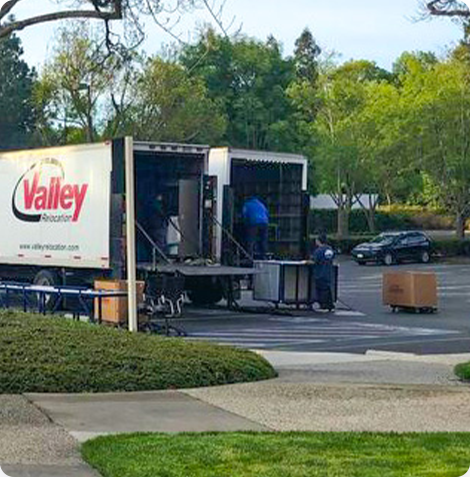In the dynamic landscape of today’s business environment, the concept of relocation extends far beyond the mere physical movement of offices and assets. The blog delves into the intricacies of business relocations in the modern era, unraveling the multi-faceted challenges that companies face and proposing comprehensive solutions for a seamless transition.
Recognizing the multi-faceted nature of contemporary business relocations, this blog goes beyond the conventional understanding of moving logistics. It explores the holistic strategies and solutions that are imperative for successful relocations in the present landscape. From meticulous pre-relocation planning and leveraging advanced technologies to managing the complexities of employee transitions and ensuring seamless business continuity post-relocation, this exploration aims to equip businesses with a comprehensive guide to navigate the intricate journey of relocation.
As we embark on this exploration, we invite you to join us in unraveling the layers of complexity surrounding business relocations, understanding the challenges they pose, and discovering the innovative solutions that redefine the very essence of moving beyond.
Understanding the Scope of Modern Business Relocations
The realm of business relocations in the contemporary setting is multi-faceted, encompassing more than the physical transfer of an office from one location to another. This segment delves into the nuances of what business relocation entails in the current business environment, the driving forces behind such moves, and the profound impact of globalization and technology on these processes.
Definition and Scope of Business Relocation in the Current Business Environment
Business relocation today is a strategic decision and process that involves moving a company’s operational base, whether entirely or partially, from one location to another. This move can range from transferring a small office to a different part of the same city to relocating the entire headquarters of a multinational corporation across countries or continents. The scope is broad and can include the physical moving of office equipment and inventory, transfer or hiring of employees, establishing new supply chain logistics, adapting to new market environments, and adhering to different legal and regulatory requirements. The essence of modern business relocation lies not just in the physical move but in the strategic realignment of business operations, corporate culture, and long-term organizational goals with the new location.
Factors Driving Business Relocations
Several key factors motivate businesses to relocate, each playing a crucial role in shaping the decision-making process:
Market Expansion: Companies often relocate to tap into new markets, seeking opportunities for growth, increased market share, and access to new customer bases.
Downsizing or Upscaling: Changes in business size, whether downsizing due to market changes or upscaling due to business growth, can necessitate relocation to a more appropriately sized space.
Cost-Efficiency: The drive to reduce operational costs can lead businesses to move to areas with lower rent, wages, taxes, or overall lower cost of living.
Access to Talent: Relocating to areas with a higher concentration of skilled labor or specific expertise can provide competitive advantages.
Proximity to Suppliers and Partners: Moving closer to key suppliers, manufacturers, or business partners can reduce logistics costs and improve efficiency.
Regulatory and Tax Considerations: Favorable legal and tax environments in different regions or countries can be a significant motivator for relocation.
The Impact of Globalization and Technology on Relocation Processes
Globalization and technology have revolutionized the landscape of business relocations, affecting both the motivations and the means by which relocations are executed:
Globalization: The integration of global markets has expanded the potential locations for businesses to operate. It has opened doors to international markets, making it more feasible and sometimes necessary for companies to relocate parts of their operation overseas to maintain competitiveness.
Technology: Advancements in technology have streamlined the relocation process. Cloud computing, for instance, allows for easier data transfer and remote working capabilities, making physical location less of a hindrance. Digital tools for project management, communication, and logistics handling have also made the coordination of relocations more efficient.
Remote Working Trends: The rise in remote working capabilities, accelerated by technology and necessitated by global events like the COVID-19 pandemic, has reshaped the concept of a workplace. This has led to re-evaluations of the necessity and functionality of physical office spaces, influencing relocation decisions.
Pre-Relocation Planning and Strategy
The process of business relocation is akin to a major organizational change and, as such, demands meticulous planning and strategic foresight. This section will delve into why strategic planning is imperative in relocation, outline the crucial steps involved in developing a comprehensive relocation plan, and present a case study exemplifying successful pre-relocation planning.
Importance of Strategic Planning in Relocation
Strategic planning in the context of business relocation is not merely about logistics; it’s about aligning the relocation with the broader business goals and objectives. Effective planning minimizes disruptions, ensures continuity, manages costs, and sets the stage for a smooth transition. It involves understanding the implications of the move on every aspect of the business, from staff morale and productivity to customer relationships and service delivery. Without strategic planning, companies risk operational hiccups, financial losses, and even long-term reputational damage.
Steps in Creating a Comprehensive Relocation Plan
Developing a relocation plan is a multi-faceted process that requires attention to detail and foresight. The following steps are crucial:
Setting Objectives and Timelines
Define clear objectives for the relocation: Understand what the business aims to achieve through this move (e.g., cost reduction, market expansion).
Develop a realistic timeline: Factor in all stages of the move, from initial planning to the final settling in, ensuring minimal disruption to business operations.
Budgeting and Financial Considerations
Create a detailed budget: Include all potential costs, such as moving expenses, real estate costs, infrastructure upgrades, and potential downtime.
Plan for contingencies: Allocate funds for unforeseen expenses to avoid financial strain during the process.
Legal and Compliance Issues
Understand legal requirements: These might include lease obligations, zoning laws, and employment laws in the new location.
Ensure compliance: Address any industry-specific regulations, tax implications, and other statutory requirements pertinent to the new location.
Technological Solutions for Efficient Relocation
In the era of digital transformation, technology has emerged as a powerful ally in streamlining the complexities of business relocations. This section explores the diverse technological tools and software designed to enhance efficiency during the relocation process, elucidates the benefits of technology in critical areas such as inventory management, logistics, and communication, and provides real-life examples illustrating how these tools have successfully facilitated seamless relocations.
Overview of Technological Tools and Software Aiding in Relocation
The landscape of technological solutions for relocation has expanded significantly, offering businesses a myriad of tools to facilitate and optimize the process. These include:
Project Management Software: Tools like Asana, Trello, and Monday.com help teams coordinate tasks, set timelines, and track progress throughout the relocation process.
Inventory Management Systems: Platforms such as Odoo, Zoho Inventory, and TradeGecko enable businesses to keep a meticulous record of their assets, ensuring nothing is lost or misplaced during the move.
Logistics Software: Solutions like ShipBob, FreightPOP, and Easyship streamline the logistics of transporting goods, providing real-time tracking and optimizing shipping routes.
Communication and Collaboration Tools: Applications like Slack, Microsoft Teams, and Zoom facilitate seamless communication among team members, ensuring everyone stays connected, even if physically dispersed.
Cloud-Based Document Management: Services like Google Workspace and Microsoft 365 allow for the secure storage and easy retrieval of essential documents, eliminating the risk of losing critical information during the move.
Benefits of Using Technology in Inventory Management, Logistics, and Communication
Inventory Management
Accuracy and Visibility: Technology ensures real-time visibility into inventory, minimizing the risk of loss or misplacement during relocation.
Efficient Tracking: Automated tracking systems reduce manual errors and enable quick identification of assets at every stage of the move.
Logistics
Optimized Routes and Shipping: Logistics software optimizes shipping routes, reducing transportation costs and enhancing overall efficiency.
Real-Time Tracking: Businesses can monitor the movement of goods in real time, enhancing control and accountability.
Communication
Remote Collaboration: Communication tools facilitate collaboration among team members, even when they are physically separated, ensuring a coordinated effort during the move.
Instant Updates: Immediate communication channels allow for quick updates on any changes or issues that may arise, enabling swift resolution.
Employee Relocation Management
When businesses relocate, one of the most critical aspects to manage is the transition of their employees. This section of the blog will discuss the challenges involved in employee relocation, propose solutions to address these challenges, outline strategies to maintain productivity and morale and showcase a case study of a company that has effectively managed employee relocation.
Challenges and Solutions in Relocating Employees
Employee relocation involves navigating a complex mix of logistical, emotional, and financial aspects. Here’s how these challenges can be addressed:
Addressing Employee Concerns and Needs
Understanding Concerns: Employees may have concerns about the move’s impact on their personal lives, families, and career prospects. Conducting surveys and one-on-one meetings can help understand these concerns.
Providing Support: Offering support services such as relocation assistance, housing help, and family integration programs can ease the transition. It’s crucial to provide comprehensive information about the new location, including schools, healthcare, and community aspects.
Compensation and Benefits Adjustments
Reviewing Compensation Packages: Adjust compensation packages to reflect the cost of living changes in the new location. This may include salary adjustments, relocation bonuses, or cost-of-living allowances.
Additional Benefits: Consider offering additional benefits like temporary housing allowances, travel expenses for home visits if moving far away, or assistance with selling homes or breaking leases.
Strategies for Maintaining Productivity and Morale During the Transition
Transparent and Continuous Communication: Keep lines of communication open. Regular updates about the relocation process and what employees can expect can reduce anxiety and speculation.
Involving Employees in the Process: Involve employees in the planning stages of the move. This inclusion can help them feel valued and reduce resistance to change.
Providing Training and Development Opportunities: Offering training for new skills required in the new location or for career advancement can boost morale and commitment.
Organizing Team Building and Social Events: Events for team bonding in the new location can help employees feel more connected and settle in more quickly.
Establishing Feedback Channels: Create channels for employees to provide feedback on the relocation process and their new working environment, showing that their input is valued.
Post-Relocation: Ensuring Seamless Business Continuity

Successfully relocating a business is not solely about the physical move; it extends to ensuring uninterrupted operations in the new location. In this section, we will explore critical steps for post-relocation business continuity, integration into the new location, and long-term strategies for success.
Critical Steps to Ensure Business Continuity Post-Relocation
Thorough Evaluation of Infrastructure: Assess the functionality of all critical infrastructure components in the new location, including IT systems, utilities, and security measures.
Employee Onboarding and Support: Continue supporting employees as they settle into the new working environment. This may involve additional training, team-building activities, and ongoing communication to address any concerns.
Customer Communication and Retention Strategies: Communicate with customers transparently about the move and assure them of continued service excellence. Implement strategies to retain existing clients and attract new ones in the new location.
Contingency Planning: Develop and test contingency plans for potential disruptions. This includes having backup systems, emergency response plans, and clear protocols for addressing unexpected challenges.
Integration into the New Location: Cultural, Operational, and Market Considerations
Cultural Integration
Understanding Local Culture: Immerse the company in the local culture, fostering understanding and respect among employees.
Incorporating Cultural Elements: Incorporate local cultural elements into the workplace to create a more inclusive and harmonious environment.
Operational Integration
Aligning Processes: Ensure that operational processes are aligned with local regulations and industry standards.
Adapting to Local Practices: Be willing to adapt certain operational practices to better fit the local business landscape.
Market Integration
Market Research and Positioning: Conduct thorough market research to understand the local market dynamics and position the company effectively.
Networking and Partnerships: Build local partnerships and engage in networking activities to establish a strong presence in the new market.
Long-Term Strategies for Success in the New Environment
Community Engagement and Corporate Social Responsibility (CSR)
Contributing to the Community: Engage in CSR activities that benefit the local community, fostering a positive image and building strong relationships.
Environmental Sustainability: Embrace environmentally sustainable practices, aligning with the growing emphasis on corporate responsibility.
Flexibility and Adaptability
Continuous Innovation: Foster a culture of continuous innovation, adapting to evolving market trends and staying ahead of the competition.
Agile Business Model: Maintain an agile business model that allows for quick adjustments to changing circumstances.
Investment in Talent Development
Local Talent Acquisition: Invest in local talent development programs to ensure a skilled workforce.
Leadership Development: Develop leadership talent within the organization to drive success in the long term.
Hire Valley Relocation for the Job!
Are you looking for a professional moving company in California? It’s time you check out Valley Relocation, as we offer streamlined services where you can easily move your business from one location to another. We offer multiple services, including warehouse and storage services, commercial relocation, and a lot more.
Contact us now for a free site survey this moving season!








